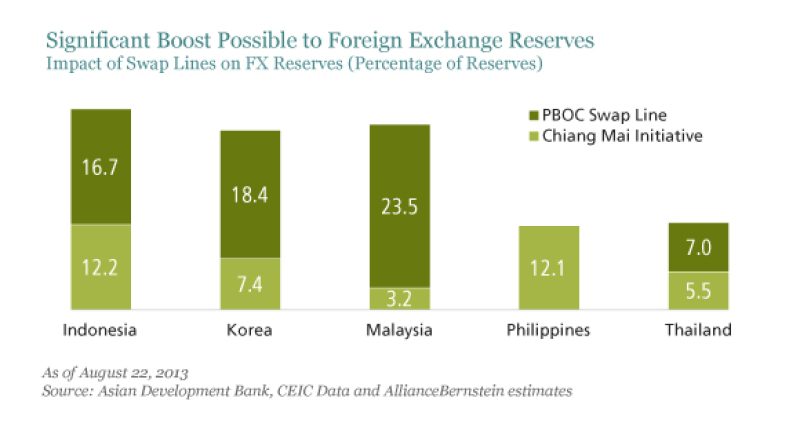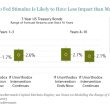by Anthony Chan, AllianceBernstein
While this week’s sell-off in Asian currency and bond markets does not, as yet, amount to a crisis in our view, it is obviously cause for concern. At this stage, we think two outcomes are likely: one is that central banks and supranational funding agencies will work together to avert a full-blown crisis; the other is that China will emerge with its power and prestige as a regional financial powerhouse considerably enhanced.
We regard further turbulence following the big sell-offs in the Indonesian rupiah and Indian rupee as almost inevitable as markets continue to adjust to the expectation of a tapering of the US Federal Reserve’s quantitative easing (QE) program. As cheap money created by QE exits the region, the countries likely to be hurt are those most vulnerable to the risk of external default.
One measure of this vulnerability is the ratio of a country’s external financing requirement to its foreign exchange reserves. On this basis, Indonesia and India are the most exposed, followed by Malaysia and Thailand—suggesting that pressure on the ringgit and baht, and on the countries’ respective bond markets, is imminent (Display).
If the currency contagion effect starts to spread, however, we think that central banks are likely to act by resuming the swap lines put in place between them during the Lehman Brothers crisis in late 2008 / early 2009. These external lifelines from the Bank of Japan (BoJ), the Fed, the International Monetary Fund (IMF) and the People’s Bank of China (PBOC) were extremely effective in helping to revive market sentiment.
China is the major provider of these facilities overall. In the US$86 billion of swap arrangements put together between Asian countries under the Chiang Mai Initiative in December 2008, for example, China was the third-biggest participant with facilities totaling US$16.5 billion (Japan was the biggest with US$38 billion followed by the Republic of South Korea with US$18.5 billion). This pales in comparison, however, with the US$247 billion equivalent total volume of separate bilateral swap arrangements denominated in renminbi (RMB) that China has made with selective countries in this region (and outside) and which are still in effect—with Indonesia (US$16.3 billion), South Korea (US$58.8 billion), Thailand (US$11.4 billion) and Malaysia (US$29.4 billion).
By contrast, the Fed’s involvement in bilateral swap arrangements within the region amounts to a single facility with Korea worth US$31 billion.
Given these external credit lines—together with liquidity quotas which most Asian countries still have with the IMF—the potential to boost various countries’ foreign exchange reserves is not insignificant. The display below shows it could amount to between 25% and 30% in Indonesia, Korea and Malaysia, and about 13% in Thailand. Clearly, however, China has acquired enormous status as the regional lender of last resort.
India, incidentally, was not covered by the Chiang Mai Initiative, and has a swap arrangement only with the BoJ, for just US$15 billion. We believe that the PBOC would be very willing to act ahead of the BoJ in the event of any Asian country asking for assistance, given China’s determination to lead the region. Some argue that the rather fractious relationship between China and India would be a hurdle to a credit line being established between the countries’ central banks, but we think China would be willing to capitalize on such an opportunity to increase its economic and financial influence—especially through a swap line which would further empower the RMB as an international currency.
The views expressed herein do not constitute research, investment advice or trade recommendations and do not necessarily represent the views of all AllianceBernstein portfolio-management teams.
Anthony Chan is Asian Sovereign Strategist—Global Economic Research at AllianceBernstein.
Copyright © AllianceBernstein

















